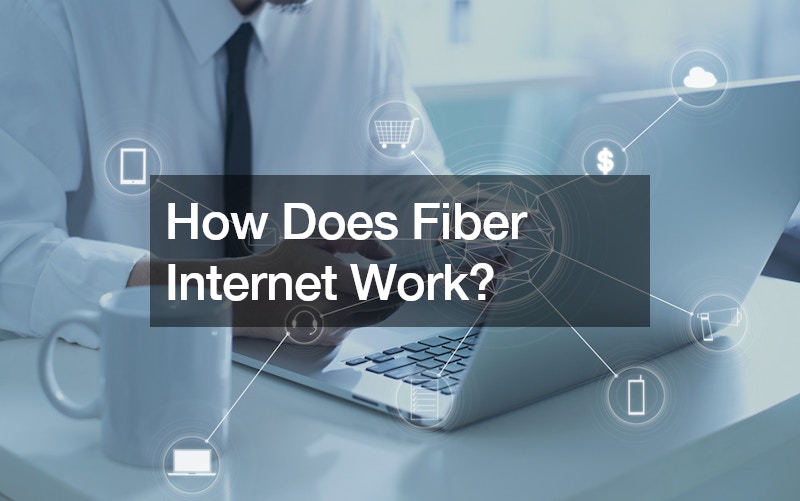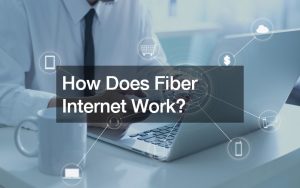Fiber internet, the frontier of high-speed internet technology, harnesses the power of light to transmit data at unprecedented speeds, revolutionizing the way we connect and interact online. Unlike traditional copper cables used in DSL or cable internet, fiber-optic technology uses thin strands of glass or plastic fibers to carry binary transmissions of light. This guide explains the mechanics behind fiber internet and why it represents a significant leap in communication technology.
The Basics of Fiber Optics
Fiber internet starts with the core technology: the fiber-optic cable. These cables consist of a core surrounded by a cladding layer that traps light, allowing it to travel long distances with minimal loss.
The core is made from glass or plastic, which is transparent to allow light to pass through. This light carries data in the form of pulses, which represent the binary code of 1s and 0s—the fundamental language of computers.
Data Transmission Using Light
The process begins when an internet transmission is converted from electrical signals (the traditional medium for data in copper wires) into light signals. This conversion is done by a device known as an optical network terminal (ONT), which is installed at the user’s location. The ONT receives digital data from the service provider and uses a light source, like a laser, to turn this data into a series of light pulses.
These light pulses travel through the fiber-optic cable at approximately 70% of the speed of light. Reflection within the fiber, caused by the cladding layer, ensures that the light signals stay within the core and can travel long distances without the signal loss typically experienced with copper cables. At the receiving end, another device converts the light back into electrical signals that can be understood by electronic devices like computers and televisions.
Advantages of Fiber Internet
The primary advantage of fiber internet is its speed. Fiber-optic cables can carry data at speeds up to 1 gigabit per second (Gbps), and some newer networks are capable of speeds up to 10 Gbps or more. This is significantly faster than traditional broadband technologies, making it ideal for high-bandwidth activities like streaming high-definition videos, playing online games, and downloading large files quickly.
Furthermore, fiber internet is more reliable and less susceptible to interference than other types of internet because light signals do not degrade over distances as quickly as electrical signals. Fiber cables are also immune to electromagnetic interference, which can affect metal cables.
Future of Fiber Internet
As the demand for faster internet continues to grow, fiber technology is continuously being refined and expanded. Developments like multi-core fiber cables and advancements in how light is transmitted and received promise to further increase the speed and efficiency of fiber internet services.
Watch the video above to learn more about how fiber internet in Wauseon, OH and nearby areas works! .













